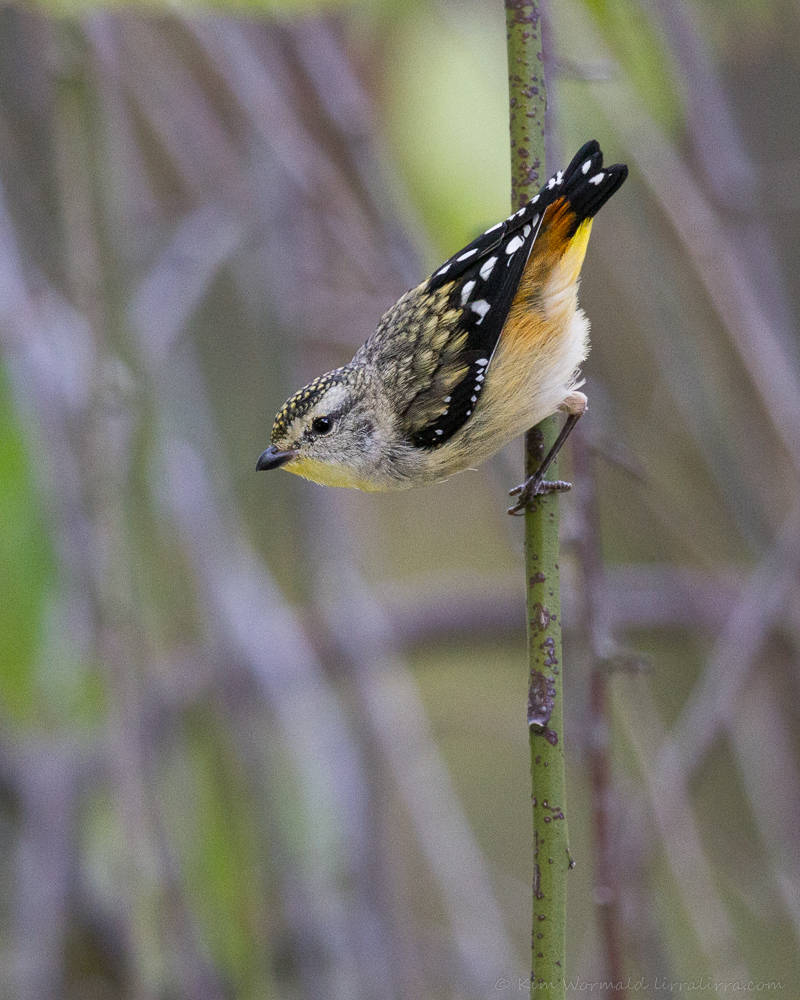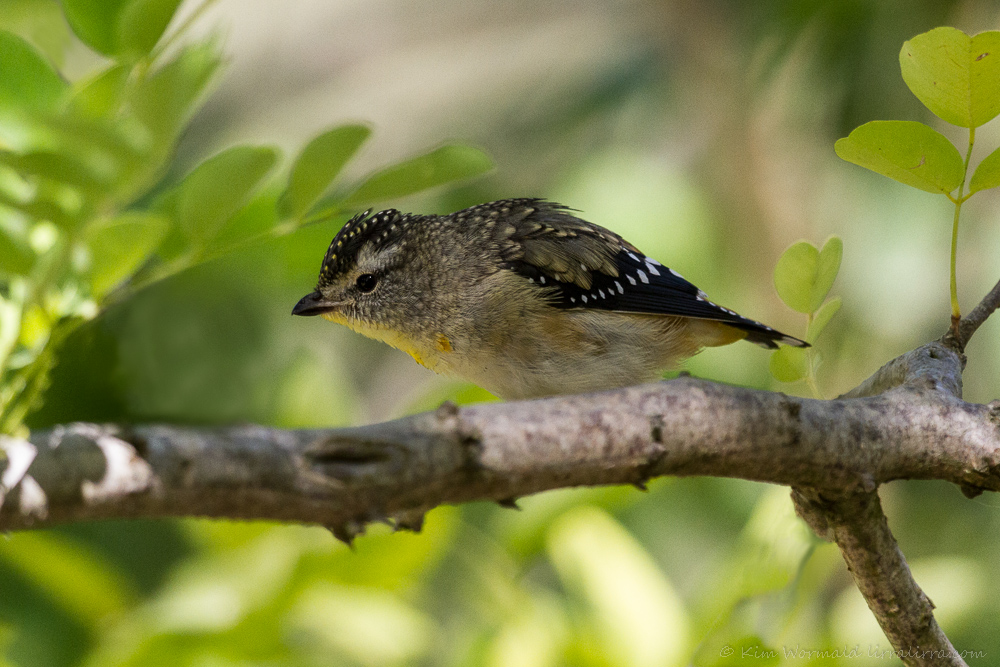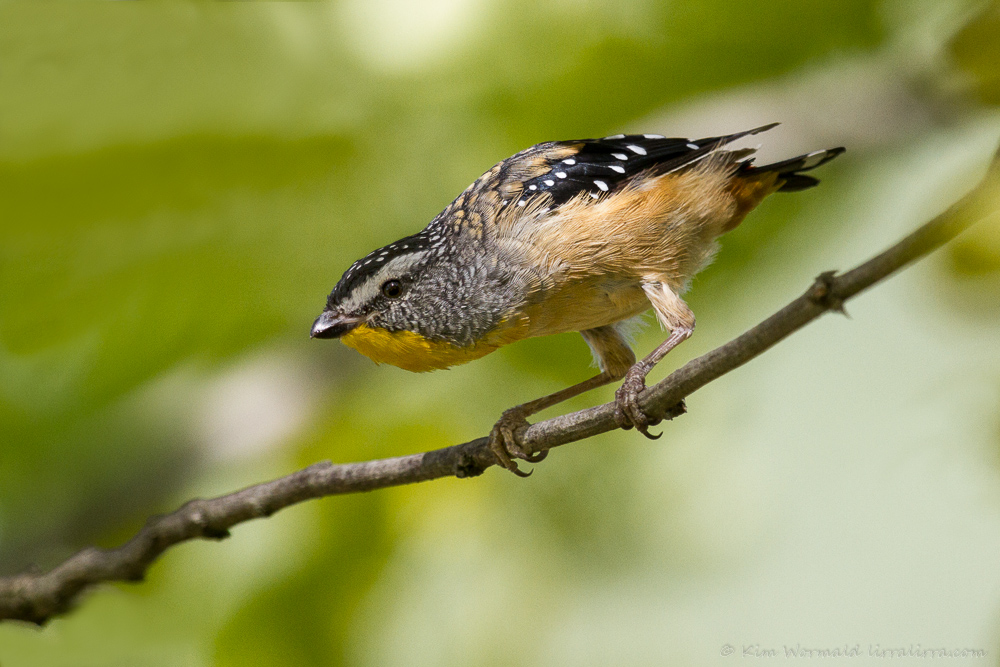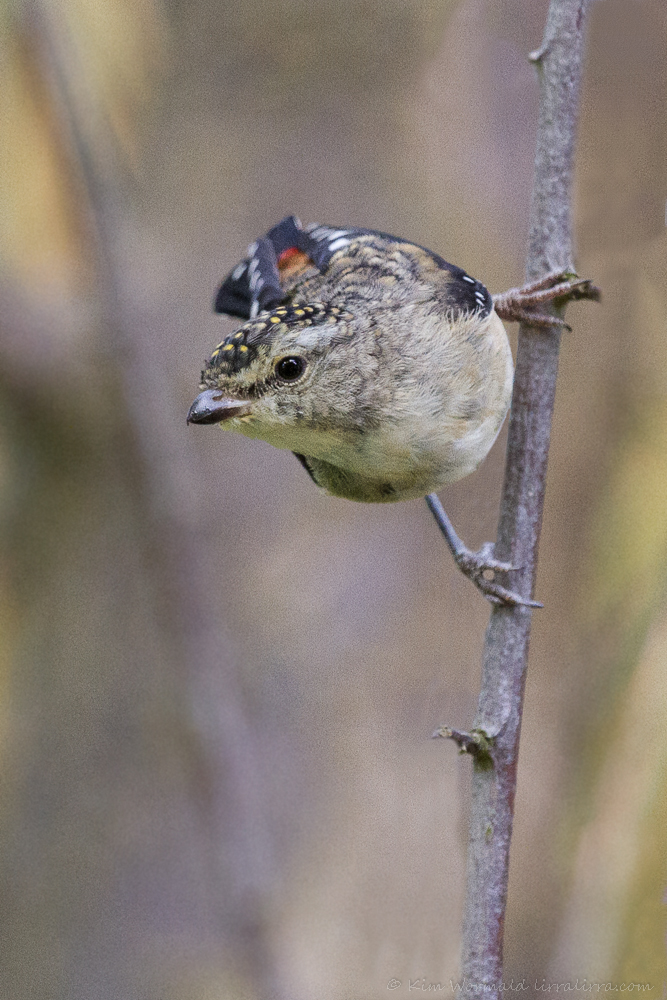At 9cm and 8g Spotted Pardalotes are a fraction larger than Australia’s smallest bird, the Weebill. Weebills are cute but they are typical little-brown-birds while Spotted Pardalotes are exquisite.
 Spotted Pardalote (Pardalotus punctatus)
Spotted Pardalote (Pardalotus punctatus)
Canon 7D, 100-400mm L IS USM, 1/640, f/5.6, ISO 1600, focal length 375mm
Spotted Pardalotes generally forage high in the eucalypt canopy and are heard more often than seen. They have a surprisingly loud call for such a tiny bird with a single whistle followed by two higher notes. They feed on insects including sap-sucking psyllids and the sugary lerps, like tiny tents, that psyllids build to protect themselves.
 Spotted Pardalote nesting chamber (Pardalotus punctatus)
Spotted Pardalote nesting chamber (Pardalotus punctatus)
Panasonic DMC-TZ1, 1/60, f/4.0, ISO 80, focal length 26.3mm (177mm)
Several years ago Spotted Pardalotes excavated a tunnel into a pile of top soil that had been delivered to our property. The first I knew of their endeavours was noticing sprays of soils flying from the pile. I spent many hours trying to capture an image of pardalotes at the tunnel entrance but they were too fast for the Panasonic I had at the time: I wish they’d come back now! Next year I’ll get another pile of top soil delivered to the same spot to tempt them. Once the nestlings had fledged I carefully removed soil from the pile, following the course of the narrow tunnel. The tunnel was almost one metre long and ended with a cavity containing the nest in the image above.
 Spotted Pardalote (Pardalotus punctatus)
Spotted Pardalote (Pardalotus punctatus)
Canon 7D, 100-400mm L IS USM, 1/500, f/5.6, ISO 320, focal length 390mm
 Spotted Pardalote (Pardalotus punctatus) (male) – prepared for take-off
Spotted Pardalote (Pardalotus punctatus) (male) – prepared for take-off
 Spotted Pardalote (Pardalotus punctatus) – I like the painted look of this image
Spotted Pardalote (Pardalotus punctatus) – I like the painted look of this image
Canon 7D, 100-400mm L IS USM, 1/640, f/5.6, ISO 1000, focal length 365mm
The ‘take-off’ pardalote can be identified as male because of his golden yellow throat and the white spots on his black head. The first two images are juvenile males that are losing the brownish colouring of fledglings but showing soft yellow throats; females, as in the final image, do not have yellow throats. There’s an image of a juvenile Spotted Pardalote in Red-browed Finches and PS11 that I would have saved for today’s post if I’d known I’d be lucky enough to photograph more pardalotes during the week.
Pardalotes can be very inquisitive and I’ve had several come too close for me to to focus on them: beautiful moments.
Happy birding, Kim

Hi Kim, What wonderful photos of those very hard working birds. I’ve always wondered what their nests look like. Thanks for the photo! Do you know how long it takes them to excavate their tunnel? Great photos.
Hi Sarah, I’m not sure how long it takes though I have watched it more than once; perhaps a couple days, though that is a guess. They work very diligently. I was lucky enough to see one in the apricot tree this morning, they really are exquisite birds, Kim
Hi Kim, thanks for your reply. Thought it might be hard to know. They really are amazing birds. So beautiful. Thanks, Sarah
Pardalotes are my favourite birds 🙂 Might be worth suggesting hot ‘n’ spicy lerps to the psillids.
What a funny thought!
These birds really are exquisite. The first picture is my favourite but I like the others too.
I think the first image is my favourite too! Thank you for taking the time to let me know.
magic kim. would love to have the 3rd image down of the pardalote as my new desktop photo…
I’m glad you like it that much! All my images are protected by copyright so it’s good that you asked – you are welcome to use it as your desktop photo. It can take several hours to get an image like that (it can take several hours to get no image at all!) so I appreciate you speaking to me about it 🙂